Please be calm: Bullfrogs are not wild animals in China.
The Novel Coronavirus Pneumonia ravages in China, not only causing severe damages to the catering industry, but also causing consumers to panic about many animal foods due to some suspicions. There have been serious misunderstandings about bullfrogs, and there have been reports that bullfrogs are wild animals and listed as species that are prohibited from sale. Although many agencies have called on the public not to listen to rumors, the government has also issued a clarification.But if we
do not clarify the basic situation of bullfrogs,
do not make clear the bullfrog industrial chain,
do not state how bullfrogs are popular in the consumer market,
do not spell out whether bullfrogs can infect novel coronavirus and other diseases,
people’s misunderstandings about bullfrogs won’t stop.
Part I. Are bullfrogs wild animals?
The bullfrogs are native to North America, Africa and Asia. The bullfrog in North America is named American bullfrog (Lithobates catesbeianus) and naturally grows in east of Los Angeles, USA. Due to its large size and high edible value, the American bullfrog has artificially expanded the distribution areas through introduction and domestication. At the end of the 1950s, Shanghai Fisheries College and other units introduced trial breeding of bullfrogs from Japan. On June 30 1962, the China Daily, Guangming Daily, Jiefang Daily, Wenhui Daily and other major newspapers published a report from Xinhua News Agency on their important page: A batch of large-scale edible bullfrogs presented by Cuban Prime Minister Fidel Castro to the Chinese government have recently been transported by aircraft from Havana to Beijing, and transferred by breeding units to Guangdong, Jiangsu and Shanghai to raise. This batch of bullfrogs survived through long-distance transportation, and the health situation is good. Since then, bullfrog farming has started in many parts of China. In recent years, bullfrogs have become one of the important aquatic products in China.

"China Daily" reported that the Cuban Prime Minister presented bullfrogs to China (left)
"Xinmin Evening News" reported that Chinese experts inspected bullfrogs (right)
Since the introduction of bullfrogs in China, aquatic science and technology workers have begun to explore the artificial breeding of bullfrogs. In 1982, Hunan Normal University and Hanshou County Special Fisheries Research Institute worked together to successfully break through the artificial breeding of bullfrogs. In 1984, Taiwan bullfrog feed was officially launched. Through systematic research on feeding and domestication of bullfrogs, nutritional requirements and artificial feeds, the technical difficulties of feeding and domestication of bullfrogs were solved, and bullfrog farming began to enter the fast lane. After more than 60 years of development, bullfrog farming has spread across 13 provinces of China, and the production in 2019 has reached about 400,000 tons, a complete industrial chain has been formed as well.
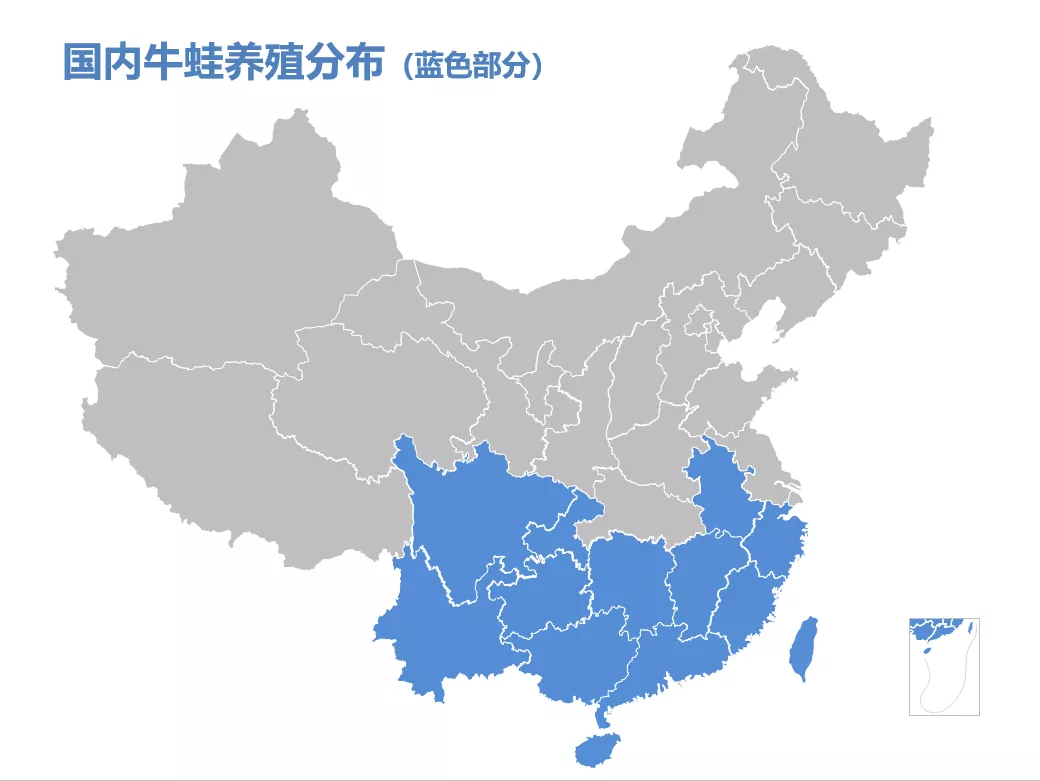
Distribution of domestic artificial bullfrog farming
As a famous and special culture species, bullfrog has strict requirements on the geographical environment and water quality. Bullfrog culture is mostly located at the bottom of the mountain in a quiet place with mountain spring water. At the beginning of last century, Tenebrio molitor, bread worms and dried freshwater fish were used to feed bullfrogs. With the advancement of bullfrog formula technology, now they are fed with artificial feeds from the seedling stage (tadpole) to adult frogs. At present, all bullfrogs consumed in the market are artificially cultivated, not wild.
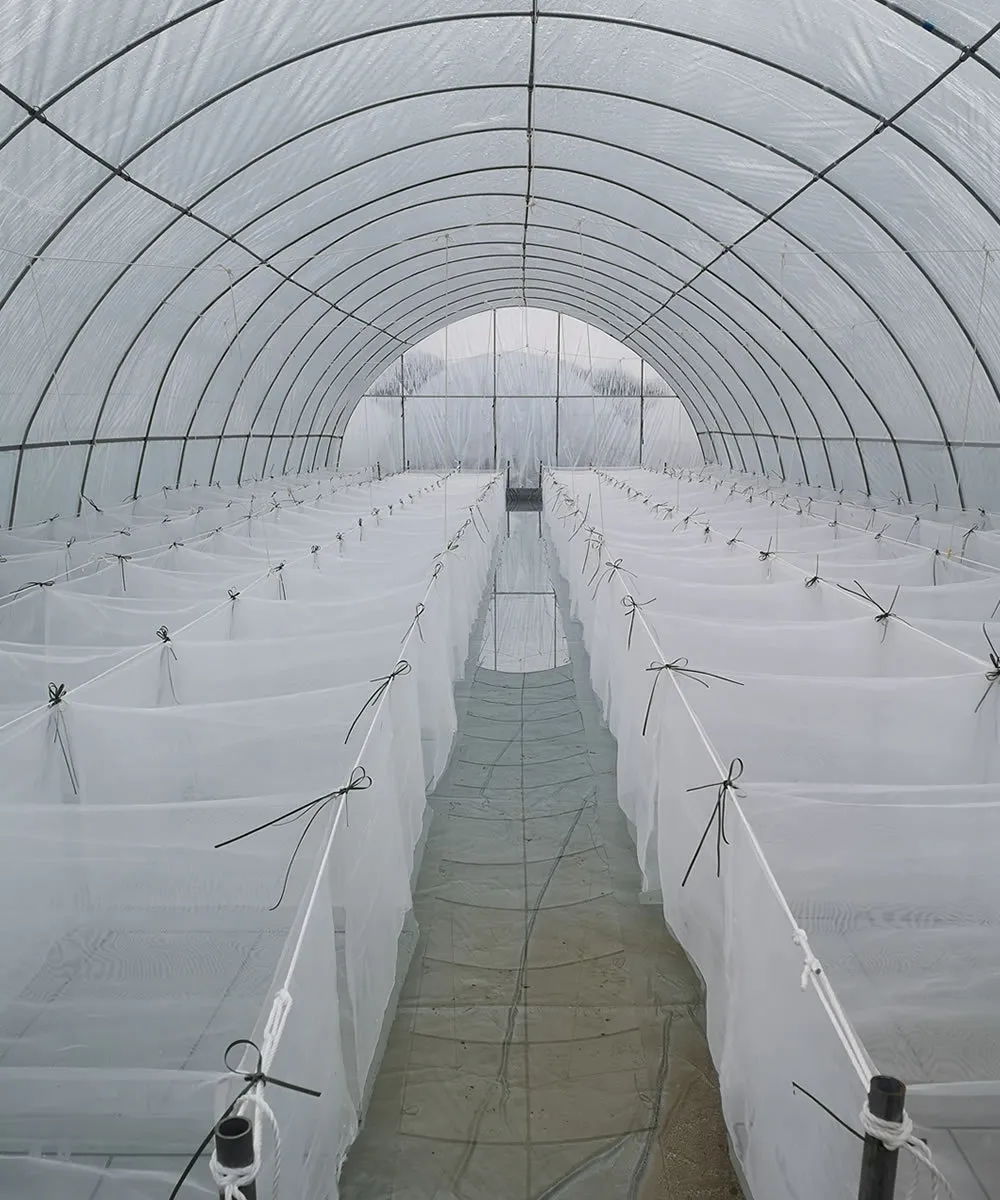
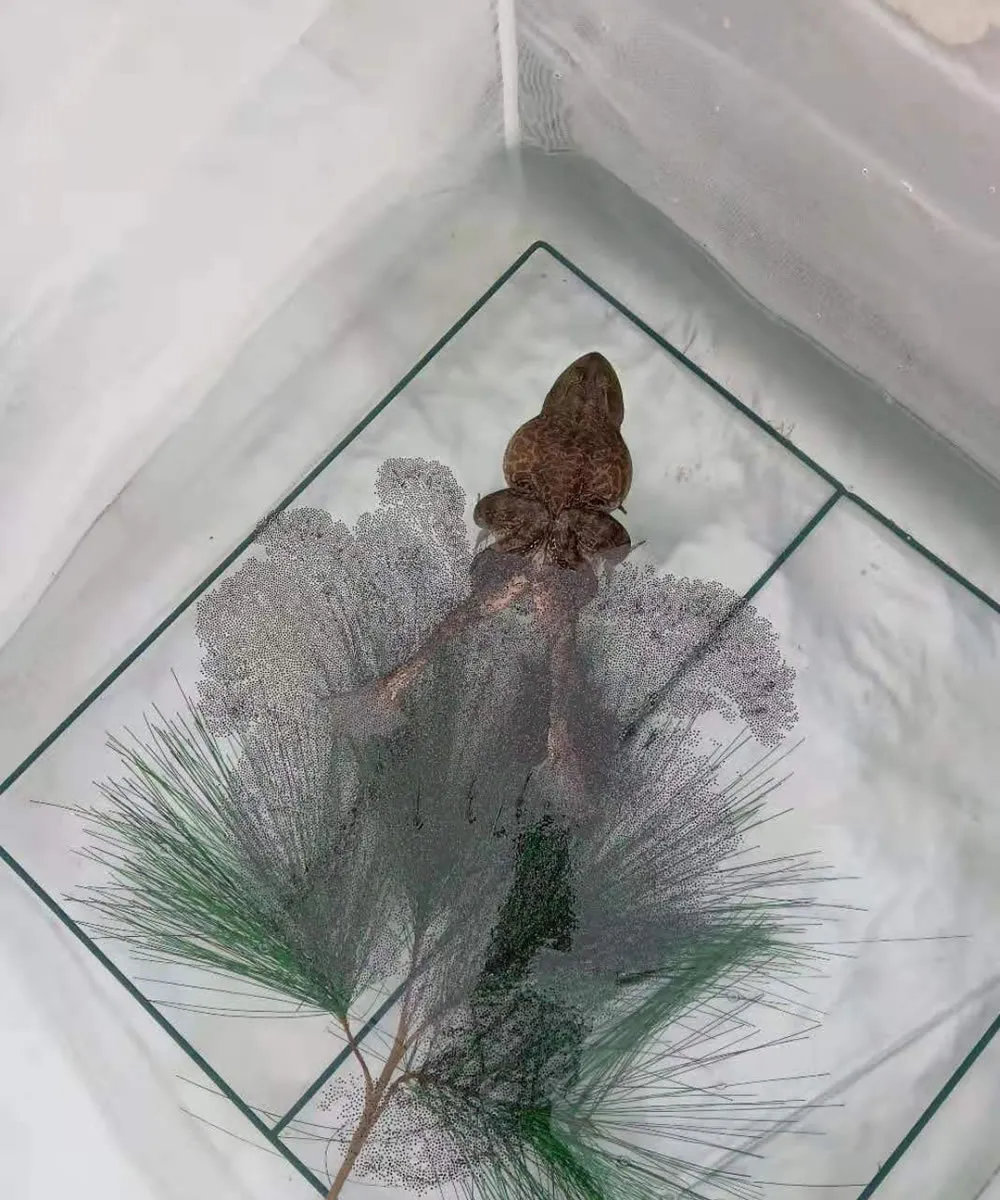


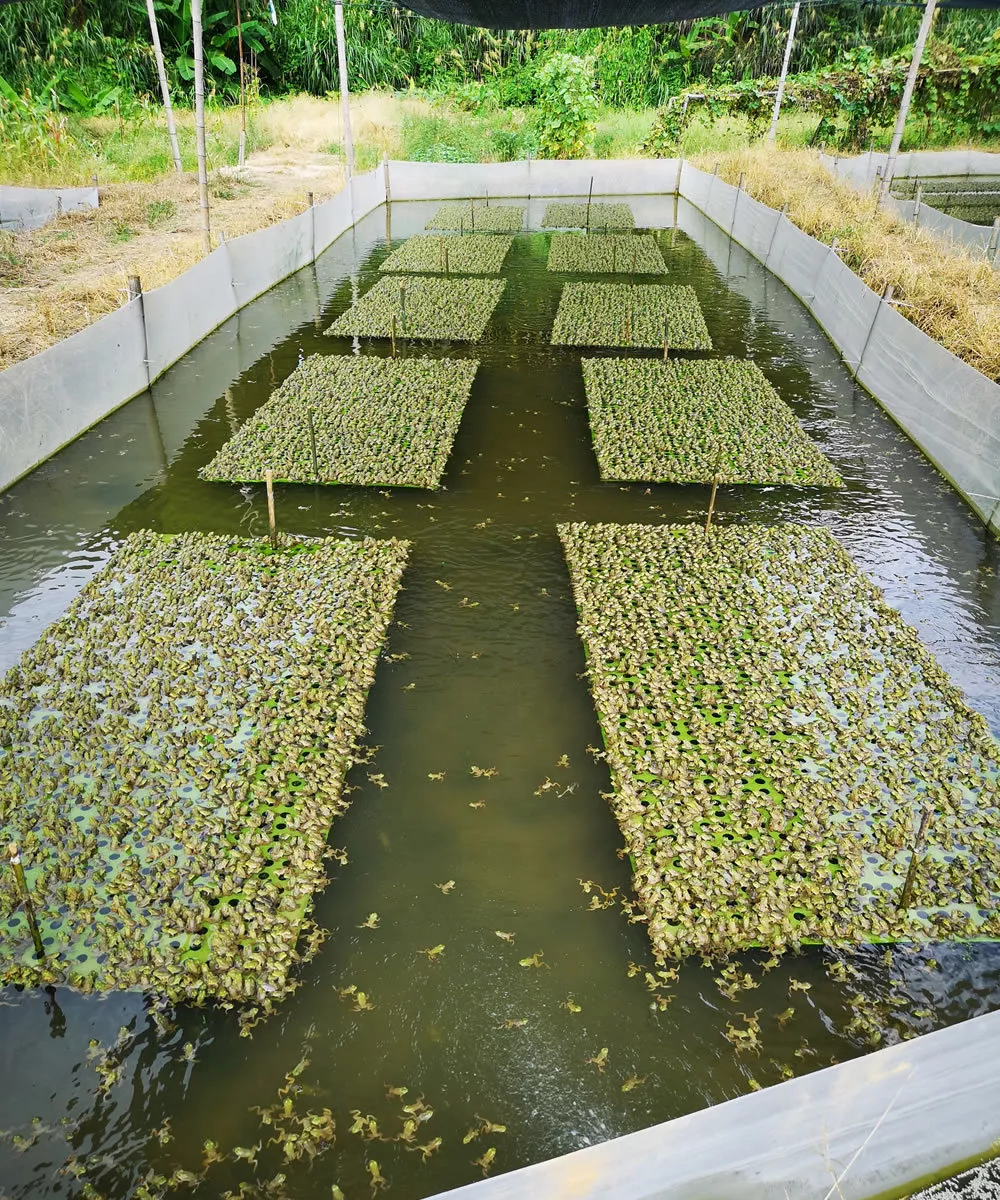
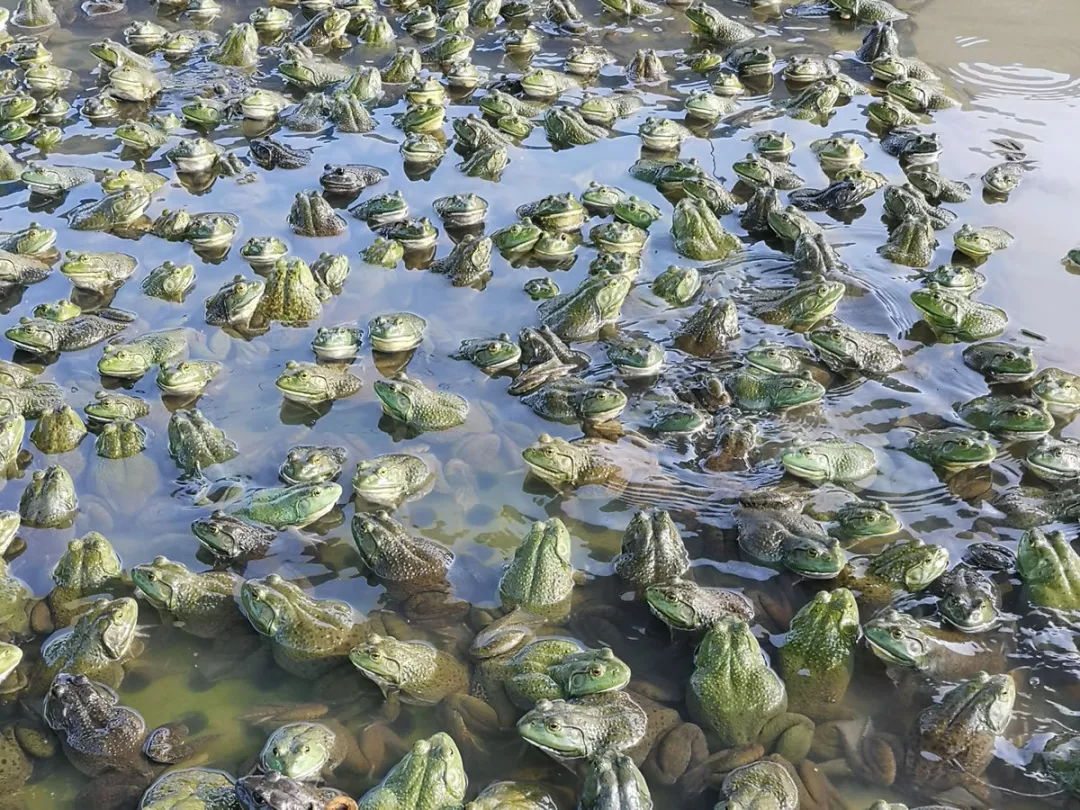
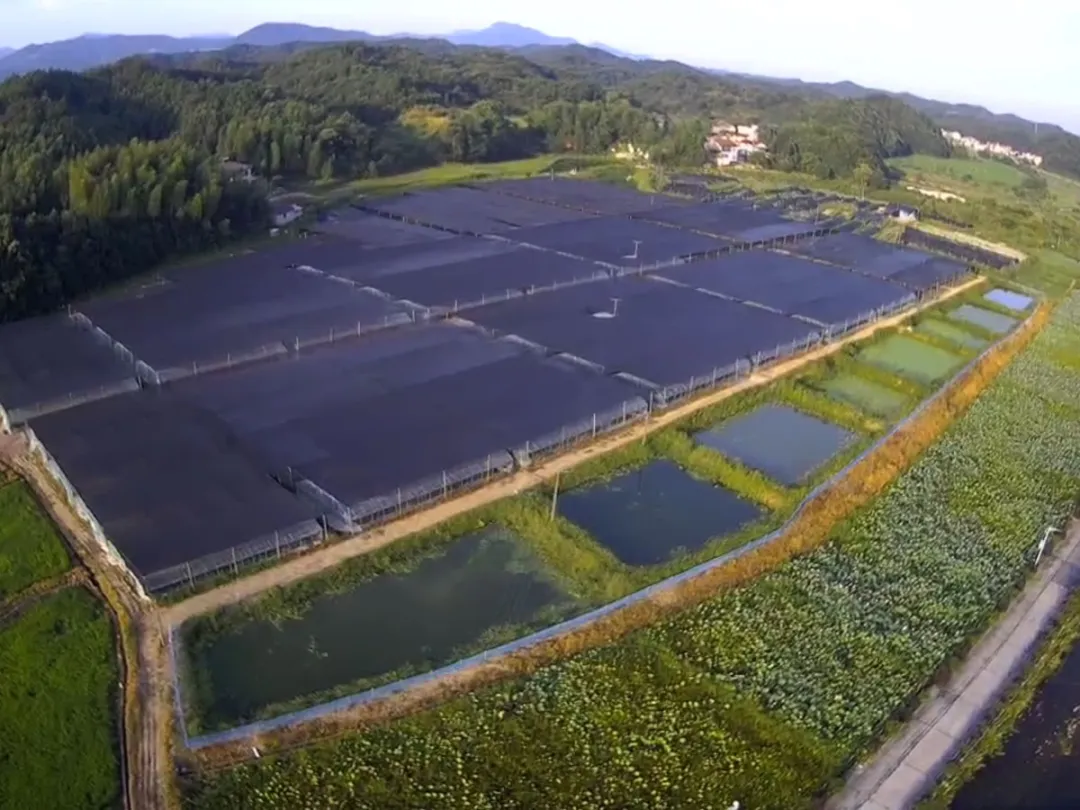

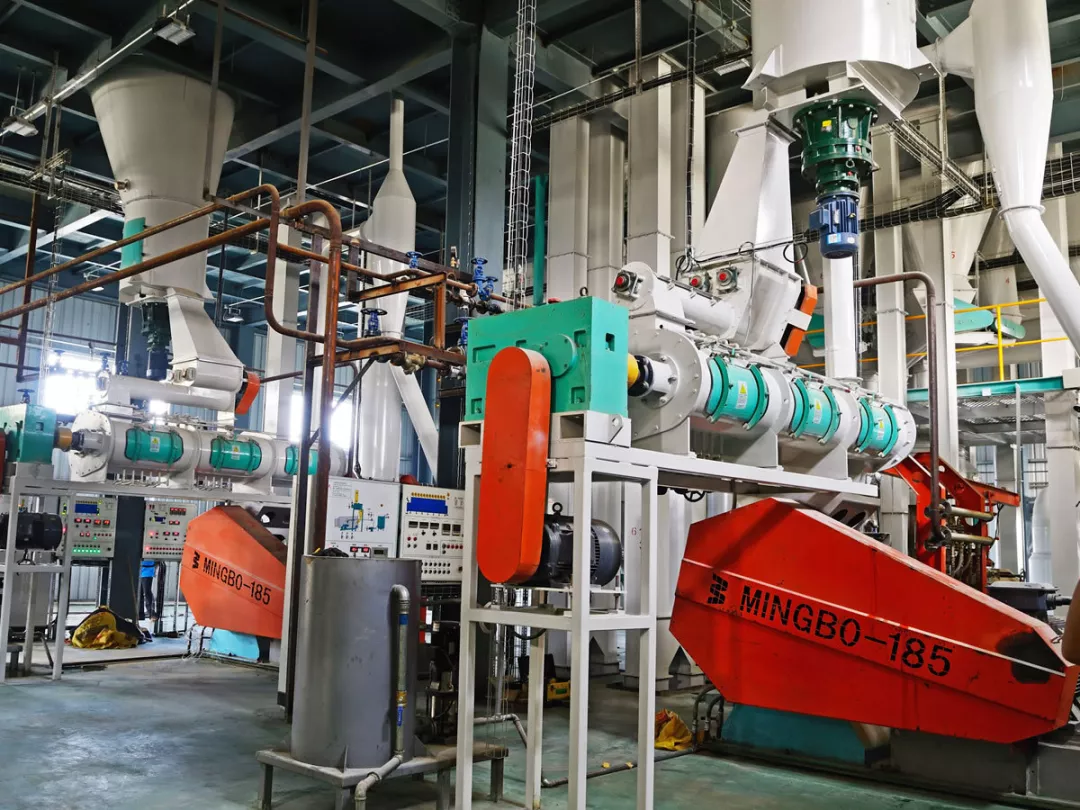


Part II. What is the current status of bullfrog processing and distribution?
The complete industrial chain is the foundation for the steady development of bullfrog industry, from the aspect of seedling breeding, farming, feed production, distribution and sales to processing of adult bullfrogs are very mature. Currently most bullfrogs which consumed in major restaurants are live frogs. To ensure the freshness of the taste, a professional distribution team is needed to transport the live frogs to the whole country through low temperature refrigeration when the bullfrogs become adult. Every major city of China has a special transit booth, and the current top five cities in terms of consumption are Shanghai, Chongqing, Chengdu, Wuhan and Changsha. During the regular season, about 250,000 kg bullfrogs will be sent to Shanghai, average 200,000 kg to Chengdu and Chongqing, and around 100,000 kg to Wuhan and Changsha per day. The distribution volume will be even larger at the end of the year. Take Chongqing as an example, the daily volume of frogs reached 350,000 kg by the end of last year.
In 2019, both the volumes of bullfrog breeding and frog feeds in China were about 400,000 tons. The output volume of breeding and feeds are 10 billion yuan. It is estimated that the whole bullfrog industrial chain value is 50 billion yuan combined with the bullfrog distribution and catering. Bullfrogs are not only sold to China, but also exported to many overseas countries. So far, the frozen bullfrog legs have been very popular in America, Japan, Mexico, Malaysia and Russia.
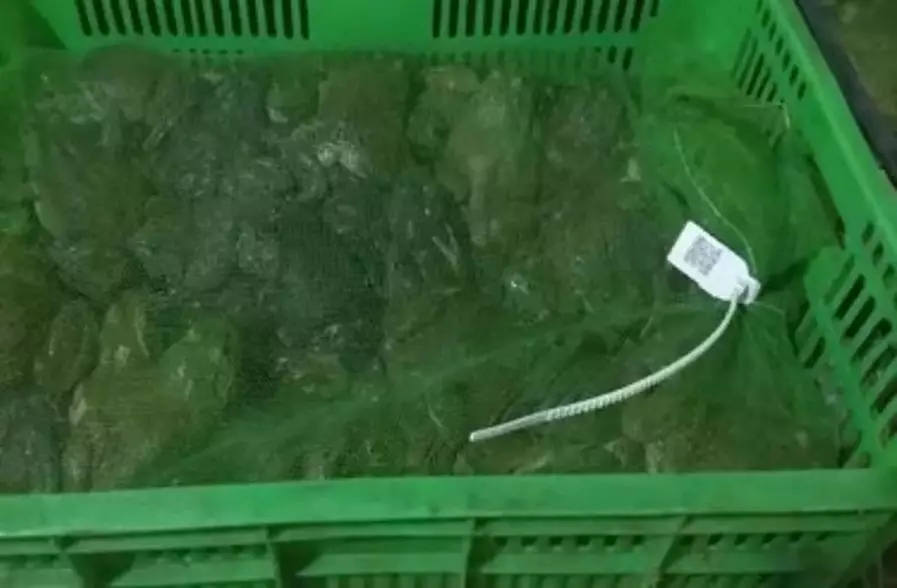

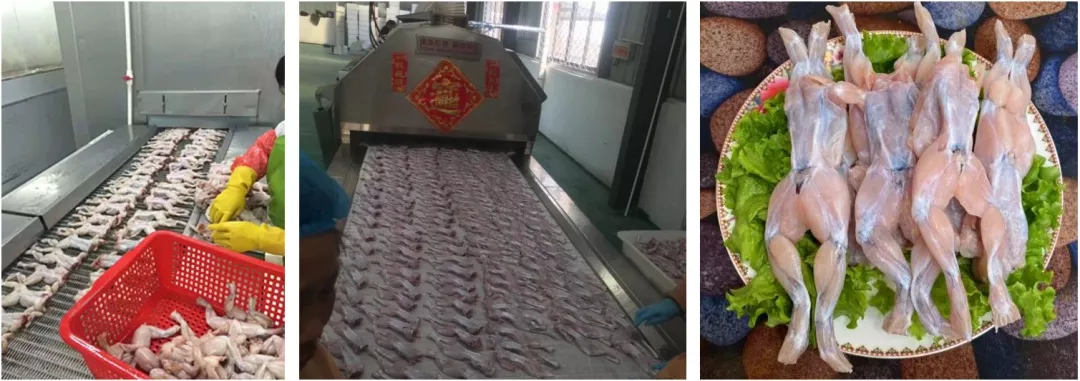

Part III. What is the current status of bullfrog consumption?
The consumption of bullfrog catering has become very popular in recent years, and the bullfrog catering has formed a wave. Bullfrog meat is a kind of heathy food with high protein, low fat and low cholesterol and rich in nutrition and fresh taste. Lots of bullfrog restaurants can be found in many shopping malls in China, and people are often needed to wait in long lines in front of many popular theme restaurants to enjoy the delicious bullfrogs.


According to the statistics of canyin88.com, the number of bullfrog theme restaurants in the 4 first-tier cities including Beijing, Shanghai, Shenzhen and Guangzhou is nearly 15,000. In China, varies of bullfrog restaurants such as JINGRUIRONG, WALAIDA, GELAOGUAN, the KUNGFU FROGGY and YONGWA are popular by consumers, and their chain stores are expanding rapidly.
Part IV. Will bullfrogs infect Novel Coronavirus?
It’s reported that the Novel Coronavirus Pneumonia (COVID-19) broke out in the South China Seafood Market in Wuhan, some people have doubts about whether aquatic products will be infected with the virus (COVID-19) or not. Although the coronavirus may occur in the South China Seafood Market in Wuhan, this market is a comprehensive farmers market, and some areas involve wildlife trading. Is it possible that the aquatic products may transmit the virus, especially the bullfrogs may carry the virus to human beings?
The COVID-19, the SARS-CoV in 2003 and the EMRS-CoV in 2012 belong to the same type of β-coronavirus, which requires relatively strict host-specificity to the infection of humans. All of these viruses originated from bats (mammals). SARS-CoV transmitted to humans through the intermediate host-civet (mammals), resulting in the outbreak of SARS atypical pneumonia. EMRS-CoV also originated from bats and spread to humans through the intermediate host-dromedary (mammals). At present, it has been found that the source of the 2019-nCoV virus still comes from bats. Although several scientific research teams have reported suspected intermediate hosts, it is still inconclusive. Because β-coronavirus has strict host-specificity, currently they basically belong to mammals with close homology, while bullfrogs belong to the class of amphibians. From the perspective of zoological classification, there is a distant relationship between them, which can rule out the possibility of bullfrogs.
So, is it possible that bullfrogs can develop other diseases that directly infect human beings? We have also consulted relevant literature to confirm the safety of bullfrogs.
Yu Xinlian published a report on the detection of Vibrio cholerae in bullfrogs and breeding ponds in the STRAIT JOURNAL OF PREVENTIVE MEDICINE, and found that Vibrio cholerae can be detected in both bullfrogs and water samples, but the tested strains were non-toxic and will not cause disease transmission.
Huang Changhe also published the detection of Vibrio cholerae in bullfrogs and breeding ponds in the journal CHINA TROPICAL MEDICINE. It showed that the Vibrio rate was 81.7% and Vibrio CT (cholera enterotoxin) detection were negative, which indicating that the cholera strains detected in bullfrogs are non-pathogenic and non-epidemic, which will not cause cholera epidemics.
In addition, there have been no reports of infectious diseases caused by contacting with bullfrogs through farmers. Based on the distant and close relationship between frogs and human beings as well as the scientific research reports reviewed above, it is almost impossible for frogs to infect COVID-19, and the diseases during bullfrog breeding do not infect humans. In our daily life, we should thoroughly heat up the bullfrogs and all kind of meats, and develop healthy eating habits, which can effectively prevent the occurrence of various diseases.


